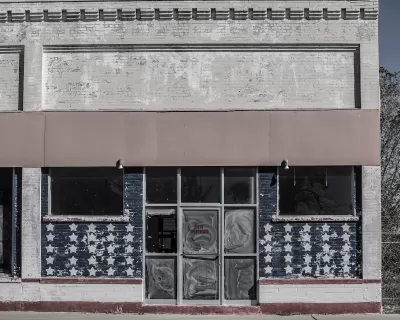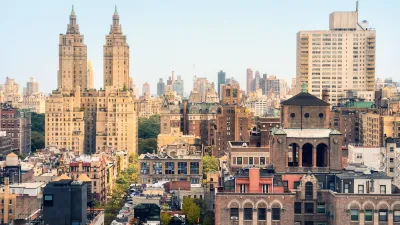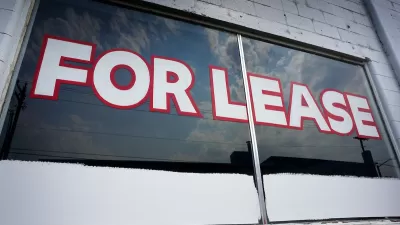A drop in demand for retail space began well before the seismic shifts of the pandemic.

In an article for Slate, Leah Brooks and Rachel Meltzer describe how the retail vacancy crisis began well before the COVID pandemic that accelerated it.
According to the authors, “Since 2012, almost a decade before we can attribute any decline to COVID, the amount of newly leased retail square feet flatlined and even declined in some cities. Also since 2012, retail rents have flattened or declined, and retail spaces sit empty longer between tenants.”
The article asserts that most cities’ zoning codes call for too much retail, leading to inevitable vacancies. This is in part “Perhaps because zoning for ground-floor retail is practically an act of faith among urban planners,” who operate on the belief that mixed-use zoning with ground-floor retail leads to vibrant, walkable neighborhoods. “However, the benefits from this type of planning are nullified when those storefronts sit vacant. Streetscapes pockmarked with dark windows and sidewalks with less foot traffic and fewer eyes can invite illicit and unsafe activity and may even suppress demand for living near those corridors.”
As online shopping and remote work continue to grow, there is no foreseeable resurgence in brick-and-mortar retail, the authors argue. Planners should focus on concentrating retail near transit hubs and mixed-use developments while allowing for residential conversions of spaces where it makes sense.
FULL STORY: Cities Planned Their Way Into the Retail Vacancy Crisis

Study: Maui’s Plan to Convert Vacation Rentals to Long-Term Housing Could Cause Nearly $1 Billion Economic Loss
The plan would reduce visitor accommodation by 25,% resulting in 1,900 jobs lost.

North Texas Transit Leaders Tout Benefits of TOD for Growing Region
At a summit focused on transit-oriented development, policymakers discussed how North Texas’ expanded light rail system can serve as a tool for economic growth.

Using Old Oil and Gas Wells for Green Energy Storage
Penn State researchers have found that repurposing abandoned oil and gas wells for geothermal-assisted compressed-air energy storage can boost efficiency, reduce environmental risks, and support clean energy and job transitions.

Santa Barbara Could Build Housing on County Land
County supervisors moved forward a proposal to build workforce housing on two county-owned parcels.

San Mateo Formally Opposes Freeway Project
The city council will send a letter to Caltrans urging the agency to reconsider a plan to expand the 101 through the city of San Mateo.

A Bronx Community Fights to Have its Voice Heard
After organizing and giving input for decades, the community around the Kingsbridge Armory might actually see it redeveloped — and they want to continue to have a say in how it goes.
Urban Design for Planners 1: Software Tools
This six-course series explores essential urban design concepts using open source software and equips planners with the tools they need to participate fully in the urban design process.
Planning for Universal Design
Learn the tools for implementing Universal Design in planning regulations.
Ascent Environmental
Borough of Carlisle
Institute for Housing and Urban Development Studies (IHS)
City of Grandview
Harvard GSD Executive Education
Toledo-Lucas County Plan Commissions
Salt Lake City
NYU Wagner Graduate School of Public Service





























